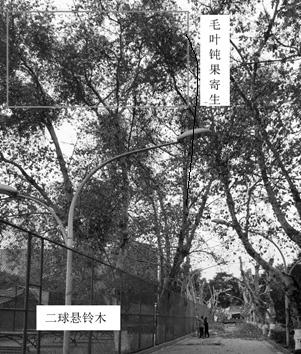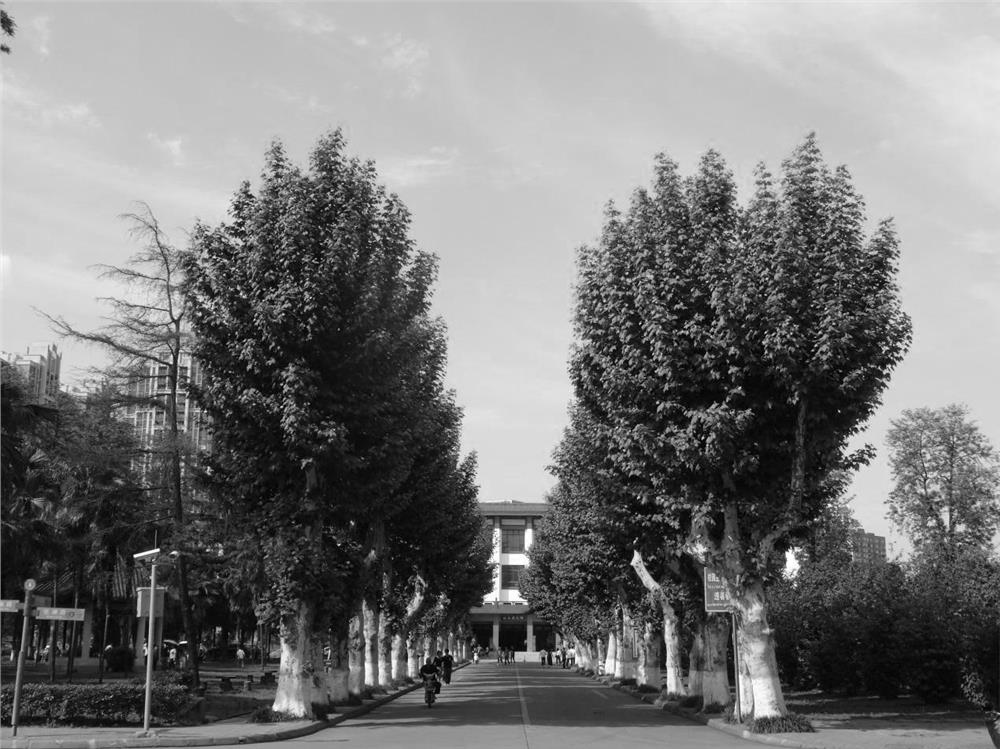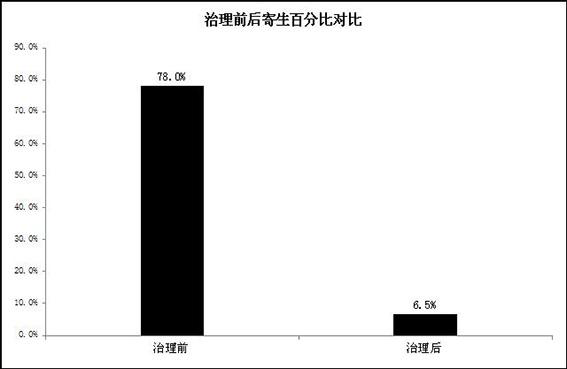A method for controlling the damage of sycamore spp.
A technology of two bulbs sycamore, hairy leaves, applied in horticultural methods, botanical equipment and methods, chemicals for biological control, etc., can solve the problems of weakened growth, poor growth of hosts, and easy death of branches.
- Summary
- Abstract
- Description
- Claims
- Application Information
AI Technical Summary
Problems solved by technology
Method used
Image
Examples
Embodiment 1
[0024] Embodiment 1: a kind of method of controlling the parasitism of hairy leaves to the damage of Platanus bilobosa, it may further comprise the steps:
[0025] S1. Parasitic hazard investigation: count the number of individuals parasitic on a single sycamore tree; each parasitic clump is recorded as a parasitic plant; use a telescope to check the number of single syringa The number of individuals parasitizing Amblycarpa trichomes on sycamore trees;
[0026] S2. Classification of parasitic intensity: according to the number of individuals who are counted in the step S1 to be parasitic, the parasitic intensity level is divided into severe parasitism, moderate parasitism, mild parasitism and zero parasitism, wherein, the Severe parasitism refers to the number of parasitic individuals ≥ 30 on a single host tree, more than 50% of the crown is replaced by parasitic clumps, and the host branches are dead; the above-mentioned moderate parasitism is 30 > the number of parasitic ind...
Embodiment 2
[0032] Embodiment 2: a kind of method of controlling the parasitism of trichomes to the harm of Platanus bilobosa, it may further comprise the steps:
[0033] S1. Parasitic hazard investigation: count the number of individuals parasitic on a single sycamore tree; each parasitic clump is recorded as a parasitic plant; use a telescope to check the number of single syringa The number of individuals parasitizing Amblycarpa trichomes on sycamore trees;
[0034] S2. Classification of parasitic intensity: according to the number of individuals who are counted in the step S1 to be parasitic, the parasitic intensity level is divided into severe parasitism, moderate parasitism, mild parasitism and zero parasitism, wherein, the Severe parasitism refers to the number of parasitic individuals ≥ 30 on a single host tree, more than 50% of the crown is replaced by parasitic clumps, and the host branches are dead; the above-mentioned moderate parasitism is 30 > the number of parasitic individu...
Embodiment 3
[0040] Embodiment 3: a kind of method of controlling the parasitism of trichomes to the harm of Platanus bilobosa, it may further comprise the steps:
[0041] S1. Parasitic hazard investigation: count the number of individuals parasitic on a single sycamore tree; each parasitic clump is recorded as a parasitic plant; use a telescope to check the number of single syringa The number of individuals parasitizing Amblycarpa trichomes on sycamore trees;
[0042] S2. Classification of parasitic intensity: according to the number of individuals who are counted in the step S1 to be parasitic, the parasitic intensity level is divided into severe parasitism, moderate parasitism, mild parasitism and zero parasitism, wherein, the Severe parasitism refers to the number of parasitic individuals ≥ 30 on a single host tree, more than 50% of the crown is replaced by parasitic clumps, and the host branches are dead; the above-mentioned moderate parasitism is 30 > the number of parasitic individu...
PUM
 Login to View More
Login to View More Abstract
Description
Claims
Application Information
 Login to View More
Login to View More - R&D
- Intellectual Property
- Life Sciences
- Materials
- Tech Scout
- Unparalleled Data Quality
- Higher Quality Content
- 60% Fewer Hallucinations
Browse by: Latest US Patents, China's latest patents, Technical Efficacy Thesaurus, Application Domain, Technology Topic, Popular Technical Reports.
© 2025 PatSnap. All rights reserved.Legal|Privacy policy|Modern Slavery Act Transparency Statement|Sitemap|About US| Contact US: help@patsnap.com



